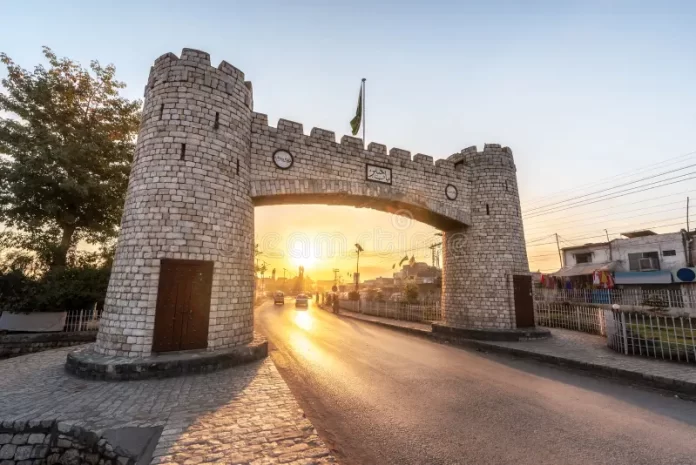NWFP is considered as a gateway for all the phases and prospects, which include invasions, and political or social changes or movements in the Indian Subcontinent due to its peculiar geo-strategic location on the Indian atlas. Its unique position made it the hub of activities, which gave the residents of the area opportunity to remain in contact with their co-religionist in India as well as in Afghanistan and Central Asia. NWFP is located between the parallels of 31.4° and 36.57° north latitude and 69.16° and 74.4° east longitude. Its extreme length since its early colonial administrative demarcation is 408 miles and its greatest breadth 279 miles, giving a total area of approximately 39,900 square miles. Throughout the medieval period until 1818 the province remained part of the Muslim empires of north India. For a period the area remained under Sikh rule but finally in 1849, after the defeat of the Sikhs and the annexation of the Punjab, the North-West Frontier districts came under the British East India Company. The British colonialists divided the area into settled districts under regular administration while the mountainous regions were considered as an independent tribal belt for their administrative purpose. But at the same time the areas remained part of the Punjab province. The different administrative officers of the British Raj argued that the area did not belong to the Punjab, geographically, historically or ethnologically, as entirely different peoples having different modes and stands of life have inhabited it.
The beginning of the 20th century brought some kind of hope for the people of NWFP as for the first time, the area was separated from Punjab and was given the status of Chief Commissioner Province on November 09, 1901. This difficult task was made possible by the efforts of Lord Curzon, Viceroy of India, who had an immense knowledge about the area. The five settled districts of Hazara, Peshawar, Kohat, Bannu and Dera Ismail Khan were separated from the Punjab, and with five agencies of Malakand, Khyber, Khurrum, North Waziristan and South Waziristan, were merged into the new North West Frontier Province of India. The formal inauguration was made by the Viceroy on April 26, 1902 at Peshawar. The head of the province was Chief Commissioner, who had twofold responsibility; he had to act as an administrative head of the province as chief commissioner and agent to the Viceroy for the tribal areas, which were given the status of independent tribal belt. The first Chief Commissioner was Colonel (later Sir) Harold Deane, who remained in office for six and a half years and was succeeded by Lt. Col G. Roose Keppel in June 1908. The province did not get the constitutional reforms, which were introduced in other provinces of India, first in 1909 by Minto-Morely reforms and later in 1919 by Montague-Chelmsford reforms.
The area was given the full Governor Province on April 18, 1931 when the Viceroy inaugurated the new Legislative Assembly. The long outstanding demand of the people was fulfilled hereafter the NWFP would share all the future reforms enjoyed by the rest of Indian provinces.
This article was last updated on Wednesday, Jan 04, 2006






